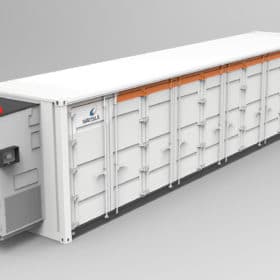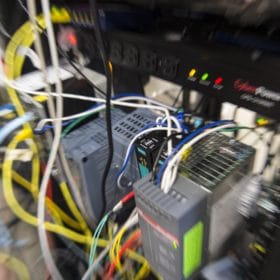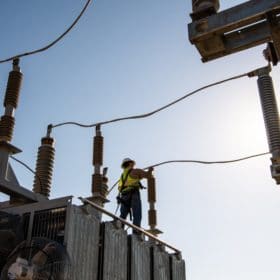Hydrogen test locomotive wins $4 million from California Energy Commission
The project by Sierra Northern Railway will integrate hydrogen fuel cell, storage, battery, and systems control technologies.
Sunrise brief: Apple added solar and wind capacity as part of its $4.7b Green Bond spend
Also on the rise: GE Renewables is supplying technology to a solar+storage facility, and NREL researchers are rethinking cell design to help integrate solar on building facades.
FPL ‘green’ hydrogen pilot could herald a scale-up using solar and wind resources
The utility touted its massive Manatee Energy Storage Center and recommitted to a $65 million green hydrogen pilot project that could impact the future of zero-emission power generation.
New optical coating could extend lifetime of solar PV cells
The research project is a collaboration between Case Western Reserve University in Ohio and the University of Rochester in New York.
Sunrise brief: Wärtsilä wins order for utility-scale energy storage to support Texas electric grid
Also on the rise: Hawaiian Electric says that developers and suppliers share the blame for its interconnection delays, Redflow will supply a 2 MWh energy storage system for a California microgrid, and FPL files for new base rates and solar project cost recovery.
Hosting capacity maps: A gold mine for solar developers
Multiple states require electric utilities to share their power grid data with solar developers. The resulting tools are like treasure maps for solar developers.
‘We have a real adversary’: Work intensifies to safeguard solar from cyber attacks
Solar inverters are increasingly smart, but their sophisticated power electronics expose potential cyber security gaps. Work is underway to harden the devices from intruders who may be out to cripple the electric grid.
University of Wyoming, 9H partner on a 3 MW solar research facility for students
The solar installation will use First Solar Series 6 modules and the research facility will return up to $10 million to the university through energy savings and services.
DOE pumps $115 million into clean energy R&D for small businesses
The latest part of the Biden administration’s Build Back Better pledge, the funding will go to grid modernization, carbon removal, renewable energy and energy storage, among other technologies.
Sunrise brief: A Texas-sized ‘oops’ for grid operator ERCOT
Also on the rise: Researchers use AI to model how grid failures cascade in a disaster, VEIR raises capital for its novel transmission line technology, NV Energy issues a community solar RFP, Freedom Solar gains two new partners, and Daqo New Energy signs a polysilicon supply deal.














